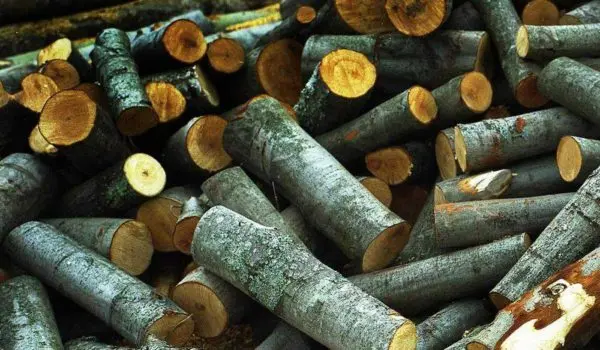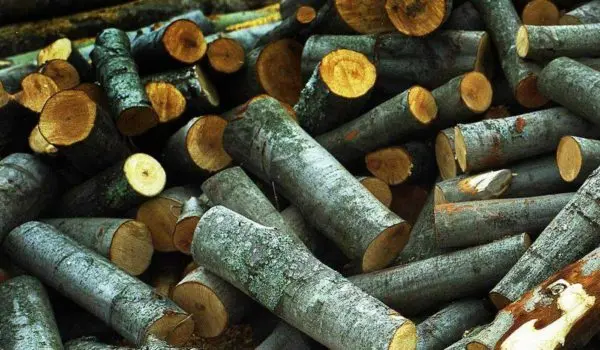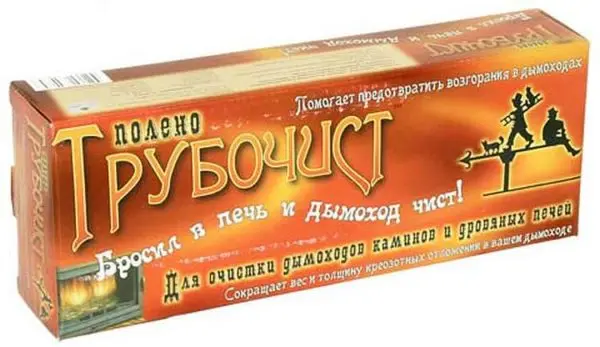Contents
Heating a house, cottage or bath is rarely complete without a stove or boiler. For our winters, this equipment is optimal: it can produce the required amount of heat. But both stoves and boilers require maintenance, and one of the mandatory procedures is cleaning the chimney.
Why is the chimney overgrown with soot
The process of burning fuel is an oxidation process, and this requires oxygen and high temperature. If at least one of these conditions is not met, soot appears – this is the result of insufficient oxidation of carbon. Externally, the presence of soot can be determined by the color of the smoke – if it is black, then it contains particles of soot, but most of it settles in the chimney, especially at the corners.
Now a little about what can cause active soot formation:
- Raw firewood. If undried firewood is thrown into the fire, it dries first. This takes a lot of energy, which greatly reduces the temperature in the furnace. We get carbon underheating, a large cloud of black smoke and, after some time of using raw fuel, we will have a clogged chimney.
The use of damp firewood leads to the accumulation of soot deposits - Burning garbage – plastic and plastic bags. It’s better to throw it in the trash. Also, a lot of soot is formed when burning with scraps of plywood, chipboard, OSB. The glue contained in them clogs the chimney very quickly – in two months of using such fuel, the chimney can become completely overgrown.
- Insufficient traction. There may be two options – the air supply is stopped in order to prolong the combustion process (the firewood is switched to smoldering mode) or the chimney is not high enough. Well, the draft may worsen due to the fact that a lot of soot has already accumulated in the pipe.
The rate of overgrowing of the chimney with soot also depends on the type of firewood. Resinous spruce and pine are not the best choice in this regard, but not everyone has the opportunity to heat with expensive oak or other hardwoods. In any case, you can make sure that the firewood is dry. To do this, it is worth building a more spacious firewood shed so that it can hold a supply for 2-3 years. Then you can use the most seasoned and dried logs, and let the fresh ones lie, reach the standard.
How to clean the chimney from soot
There are three ways to clean the chimney:
- Mechanical. A ruff is thrust into the chimney, with the help of which they knock soot off the walls. The disadvantage of the method is that it is necessary to have access to the pipe, which is not always easy. Not everyone is able to climb onto the roof, and flexible rods and access are required for cleaning from below. Another unpleasant moment: all the contents are poured down, you have to collect and take it out, and then wash the stove or fireplace from soot for a long time. Therefore, before cleaning, put some kind of container into which everything will be poured.
- Chemical cleaning of the chimney – powders and briquettes (logs). When the system warms up, the powders are poured into the fire, the logs are placed at the firebox. The substances contained in them soften the soot, it gradually flies into the pipe, but can fall down and clog the passage altogether. So these funds are best used for prevention, when there is still a little soot.
- folk methods. The problem of overgrowing chimneys with soot is not new, and our ancestors were able to cope with it without chemistry. There were, of course, chimney sweeps, but they worked in cities, and their services cost a lot. Nevertheless, they coped with the problem, and with very simple means – salt or potato peels.
There is another cardinal decision – to go to the firemen and call specialists. They are no longer called chimney sweeps, but perform the same functions, however, by other means. The decision is not bad, they know their job, since soot is explosive, if only someone is not given permission. The only negative is the cost of such services.
Mechanical chimney cleaners
Cleaning the chimney with ruffs has been used for centuries, and they still exist today. A ruff brush is tied to the end of a long elastic and flexible cable. Diameter – individually for the size of the chimney. A small metal ball can be tied under the ruff – in order to make it easier for the tool to go down. This structure is lowered into the chimney, raised, lowered again and raised again. So until the passage is cleared. Everything works simply – soot is knocked off the pipe with bristles.
Such cleaning of the chimney has one feature: in the presence of good traction, most of the chipped soot flies into the chimney. Therefore, firstly, you need to become attached so that you don’t fall off the roof from involuntary movement, and secondly, put on goggles and a respirator. Gloves will not interfere either, but they are needed so that the cable does not injure your hands.
If you decide to make a chimney brush yourself, hang the ball below, and centered. Weights or wrenches are not suitable – sooner or later they become at odds in the chimney. You will be lucky if the gun can be removed without dismantling the pipe.
Not always the chimney is such that it can be cleaned from above – a sandwich pipe can rise several meters above the roof. You can’t attach a ladder to it, you can’t get up in any other way. In this case, the chimney is cleaned from below. To do this, there are ruffs on flexible rods. Fragments of the rod are connected to each other, the ruff moves along the pipe. In this case, part of the soot is also carried away by the draft, but some of it falls down and this must also be taken into account. Professional chimney sweeps use special vacuum cleaners for collection (not household ones, since soot is explosive); if you clean it yourself, you will have to collect everything manually.
If you have a fireplace, everything is simple – access is free, but if it is a boiler or a sauna stove, the matter is more complicated. If the chimney has a glass for collecting condensate, removing it, you can easily run the ruff into the pipe. If there are no revisions, you will have to try to get to the pipe through the firebox. If this is not possible, the chimney will have to be disassembled. Then it’s better to immediately redo it by putting a tee with a glass.
Means for dry cleaning of the chimney
You can clean the chimney with chemicals before it is too clogged. If the pipe is brick, these products help make mechanical cleaning less frequent. As an independent agent, they can be used for ceramic chimneys or those made of stainless steel. All these powders or logs for removing soot from the pipe are preventive. It is not always possible to clean the chimney from a large amount of soot with them. There were cases when the soot that fell down after burning the powder clogged the chimney tightly. I had to take a ruff and clean it by hand.
Despite these shortcomings, the products are used and here’s why: during processing, the soot that is in the boiler, sauna stove or in the smoke channels also softens. Shaking them by hand is a bit of a pleasure, and regular use does a pretty good job of dealing with the problem.
There are plenty of products for cleaning chimneys from soot in stores, but here are the most popular:
- Kominichek. This is a Czech product. The package contains paper bags with granules packaged in them. This soot remover is placed in a well-heated oven without breaking the bag. A whole paper bag is placed on firewood, it is not necessary to tear the product out. According to reviews, it works fine. It is most effective while the soot layer is not more than 2 mm – it cleans the chimney to clean walls.

Powder for cleaning chimneys “Cominichek” - Log for cleaning the chimney. Most often called “Chimney Sweep”, but there are other names. They are produced by different companies, so the boxes differ in design. Regardless of the manufacturer, the rules of use are the same: a log for cleaning chimneys is placed in a well-heated oven. That’s all, during the combustion process, the substances contained in the smoke soften the soot and it evaporates or crumbles down.

Log for cleaning chimneys - Powder means for cleaning pipes from soot of domestic production. There are many, many, many different names. Most contain the word “chimney sweep”: Cheerful chimney sweep, Chimney sweep happy summer resident, Chimney sweep Express, etc. There are many names and firms, the essence is the same – the powder is packaged in bags, the bags are laid in a burning furnace.
After using all chemicals, the room must be ventilated, the stove or fireplace cleaned. Please note that after processing, the soot may crumble for a couple more days – the remnants fly off.
Folk chimney cleaning methods
The easiest way to prevent the formation of soot is to heat an already heated stove with aspen wood. They burn with a very hot flame, soot burns in the chimney. The action is effective, but dangerous – if a lot of soot has accumulated, when ignited, it explodes and can break the pipe.

There are safer folk remedies with which chimney cleaning is both effective and safe. In a melted and well-heated oven, add half a kilogram of salt or about a bucket of potato peelings. It is better to dry the cleanings or add raw ones little by little – so as not to bring down the temperature in the furnace. The action is about the same as when using chemicals, only a little softer – soot flies from the pipe for another three days.











